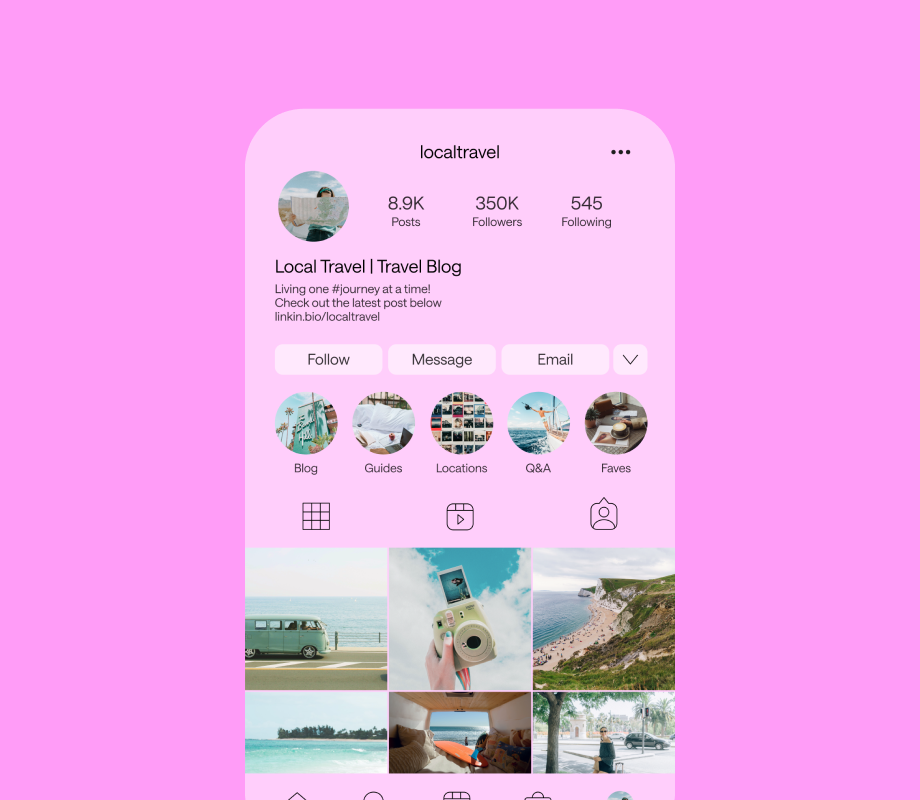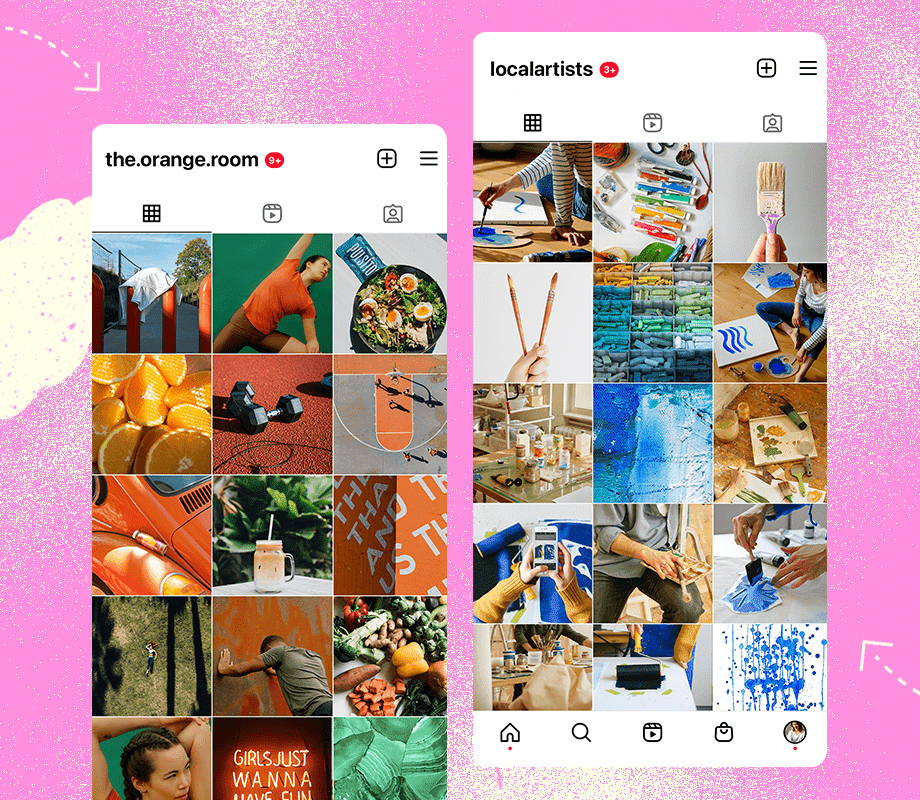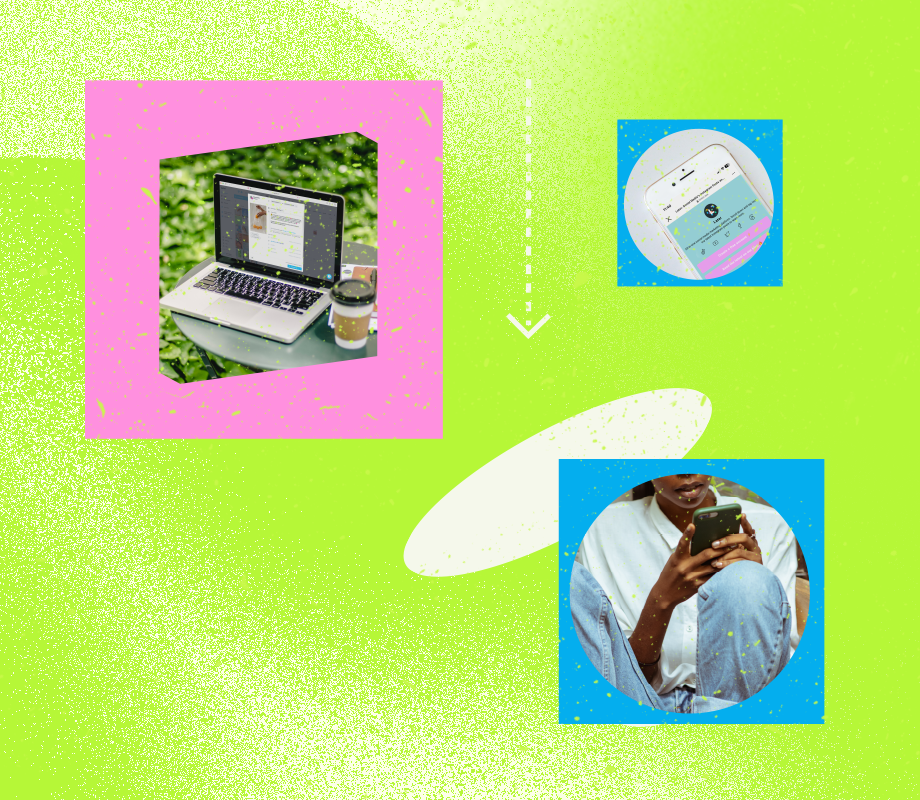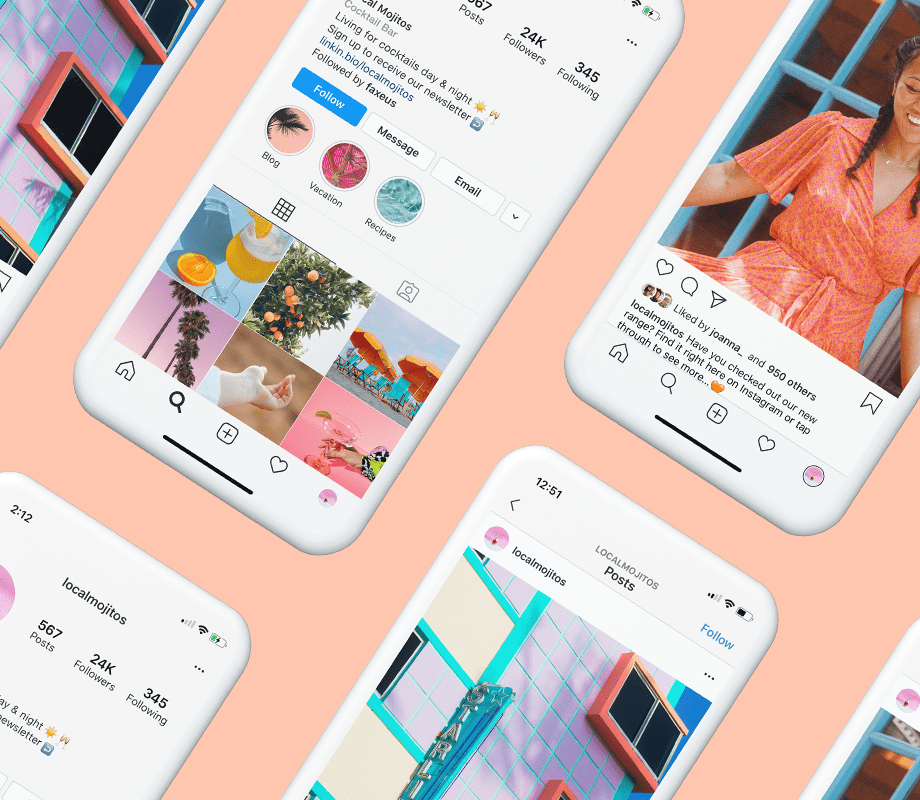Should you still plan your Instagram feed in advance? Yes — but it doesn't have to be perfectly curated.
That said, a well-planned feed can help you visually convey who you are and what you do in a matter of seconds — which is key for converting visitors into followers.
We're sharing all the details, including how it can contribute to your growth on the platform, below.
TIP: Later’s free Visual Instagram Planner lets you plan and preview your Instagram feed before you hit publish. Try it now.
Table of Contents
Why Should You Plan Your Instagram Feed?
Your Instagram feed is the first thing a visitor sees when they land on your profile.
Think of it as the sign above your shop door that encourages people to walk in.
So if you want users to pop by and continuously revisit, you need to think about more than just your individual Instagram posts and consider your feed as a whole.
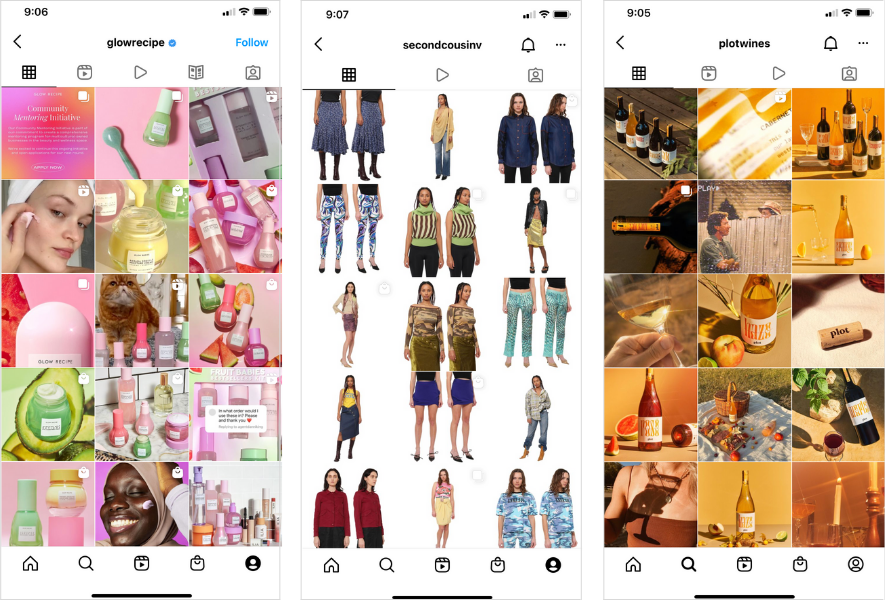
And a strong visual aesthetic is a great way to start.
While it doesn't have to be picture-perfect (that era has passed), planning your Instagram feed in advance can help you tell a cohesive brand story and be consistent.
And consistency = more engagement!
4 Tips for Planning Your Instagram Layout in 2024
Want to learn how to make a lasting impression and get more followers?
Here are four tips to get started:
Tip #1: Define Your "Aesthetic" or Brand Colors
In 2024, the Instagram aesthetic may no longer be “perfect,” but users are still drawn to grids that tell a cohesive visual story.
This could be a grid that makes use of complementary colors, or one that mixes up memes and lifestyle posts.
Check out how Acid League maintains a bold, colorful grid to showcase their product assortment:

Remember, your brand colors, fonts, and textures all play a part in achieving a captivating aesthetic on your Instagram feed.
TIP: Create a mood board to get your creativity flowing and guide you in the direction of what you want your grid to look like.
Tip #2: Use a Variety of Content Types
When planning your Instagram grid, it's important to incorporate a variety of content types to keep your audience engaged.
Translation: Diversify your posts.
Mix up static images with Reels and carousel posts to give your community more ways to connect and keep your feed from feeling one-note:
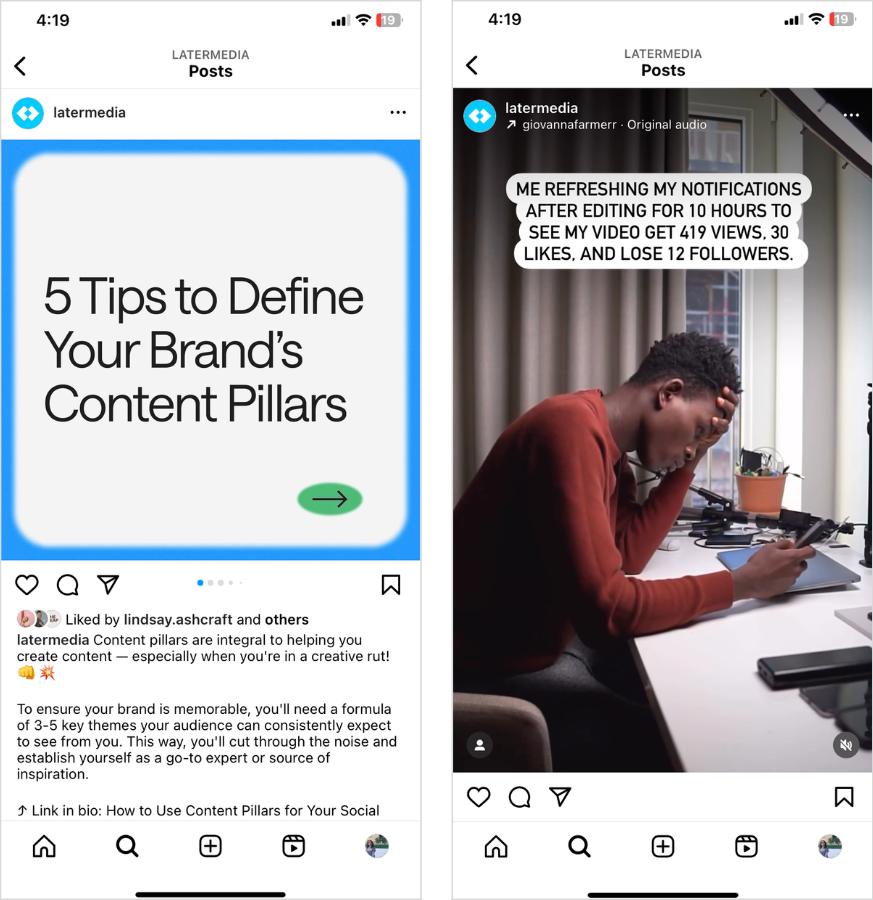
Whether you're sharing behind-the-scenes footage or announcing a sale, changing up your Instagram content gives you more ways to engage and highlight what makes your brand unique.
Plus, if you’re tracking the performance of your posts, you’ll be able to see what content resonates with your audience most.
Tip #3: Be Consistent
Ask any social media manager or influencer, and they’ll say a key part of their success is having a consistent posting cadence on Instagram.

While it doesn’t have to be every single day, it’s important to post content throughout the week to keep your audience engaged.
We analyzed over 19M Instagram feed posts and 32K Instagram Stories to determine the average posting cadence: How Often Should You Post on Instagram Every Week?
Tip #4: Plan Ahead
Planning ahead will help you curate a strong visual aesthetic.
And with Later’s free Visual Planner, you can preview and rearrange your feed before you post — so you can see your profile the way your followers will.
Which brings us to the next section...
How to Plan Your Instagram Feed With an Instagram Grid Planner in 2024
First impressions on Instagram matter; they can mean the difference between a user hitting follow or tapping away.
Here’s how you can visually plan your Instagram feed and create your own, tailored aesthetic:
Step #1: Prepare Your Instagram Content
In order to curate your feed, you’ll first need to prepare content to post.
This can be your own existing content dropped to your Media Library, sourcing visuals via stock sites or tagged posts, or creating graphics with a tool like Canva.
Then, during the editing process, choose the same filter, crop style, or editing "rules" to keep your content visually consistent.
Here at Later, we use a mix of our brand colors and fonts to help reinforce our look and feel:
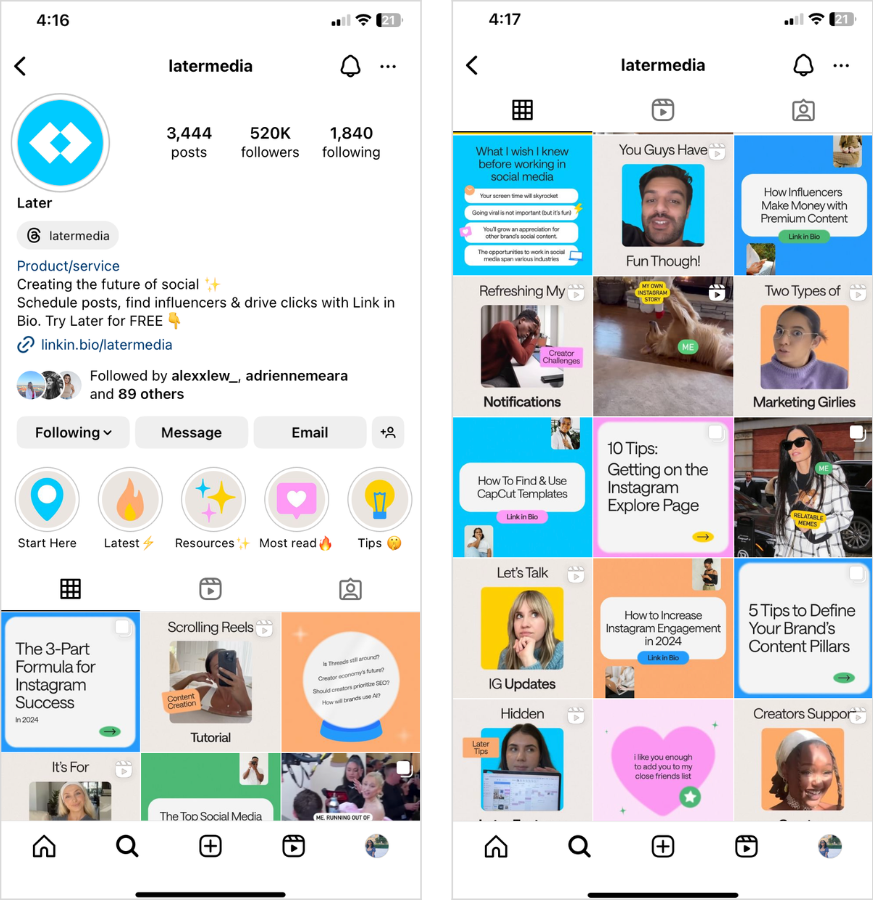
If you don't have the budget or capacity to create new content all the time, supplementing your feed with user-generated content (UGC) can be a great way to elevate your feed.
And Later’s suite of UGC tools is a great place to start: you can review the posts you’ve been tagged or mentioned in, and search for posts that include a certain hashtag.
Step #2: Curate a Cohesive Feed
Next up, it’s time to think about how your posts will look alongside one another.
Later’s Visual Planner makes it easy to see how your feed will look in advance, so you can make sure your upcoming and existing content fit together seamlessly.
Rearrange (or swap out) photos and videos by dragging and dropping posts from your Media Library until you’ve found the best composition for your feed:
Step #3: Schedule & Publish Your Posts
Once you’re happy with your overall grid, tap “Save” to schedule the posts to your feed.
Then, make sure to write captions, add hashtags to optimize for SEO, and double-check the time it'll go live.
It’s that simple!
Scheduling your posts ahead of time doesn’t just help you maintain a consistent aesthetic, but it also helps you post more regularly — the perfect recipe for growth on the platform.
So, what are you waiting for? Preview your feed before you publish with Later’s free Visual Instagram Planner tool. Create an account, now.
